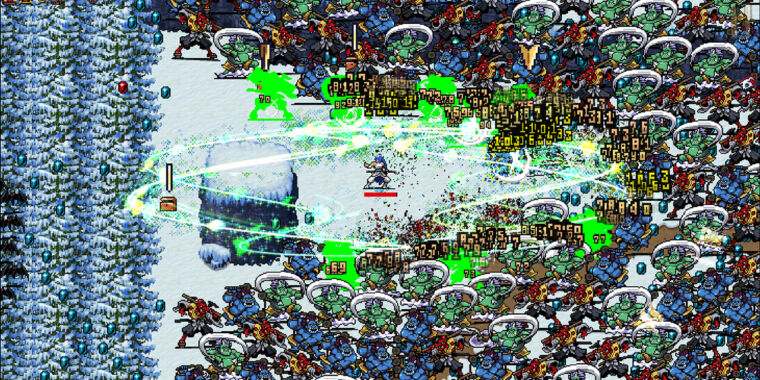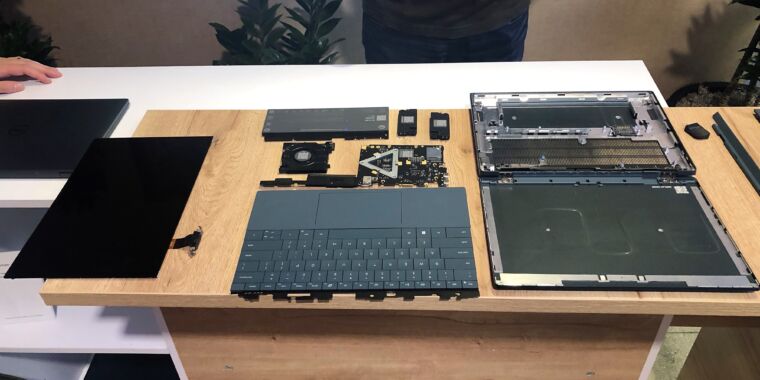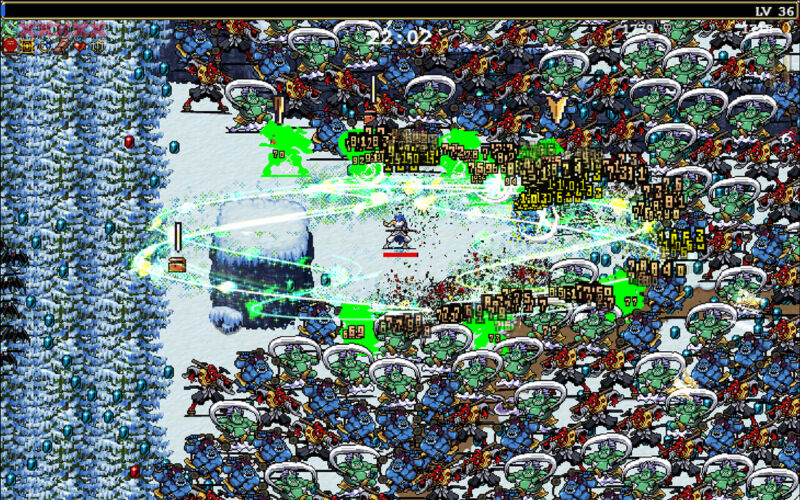
In our review of Vampie Survivors, we noted how it seems like “you’re always unlocking some cool new toy or character to play around with.” Unfortunately, that’s not literally true. After dozens of hours, most players will be able to find every secret and unlock every one of the game numerous unlockable characters, maps, and weapons.
The game doesn’t instantly lose its hypnotic, epilepsy-inducing appeal at that point, of course. But once you’ve finally met all of the game’s many “official” goals, it becomes a bit more difficult to come up with new self-imposed challenges.
Enter Legacy of the Moonspell, the first piece of official paid DLC for Vampire Survivors. While we welcome any new content for one of our favorite games of the year (especially when it’s offered for just $2), this addition feels a little limited, especially for a game that has seen dozens of free updates since its 2021 launch in Early Access.
Mountains of madness
As the name implies, a main highlight of this DLC is its new stage, Mt. Moonspell. The developers at Poncle boast that this map is “25 times bigger than other maps in Vampire Survivors, but it doesn’t feel that way in practice. That said, Mt. Moonsepll feels much more intricately designed than most previous Vampire Survivors maps.
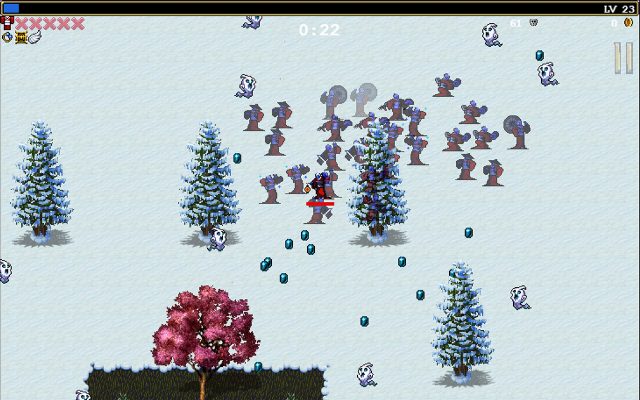
On other Vampire Survivors maps, getting to a specific item on your map is usually just a matter of walking in the correct cardinal direction for a while. That’s not necessarily true on Mt. Moonspell, where you’re likely to run into a cliff edge or impassable walls that force you to double back and find a new way through maze-like corridors. There are plenty of dead ends to get trapped in (or to trap encroaching enemies), as well as several new “indoor” areas, where entering a door causes the roof to fade away to let you see the chambers inside.
While there are a few new enemy types in Mt. Moonspell, most of them amount to fodder that’s difficult, if not impossible, to differentiate from existing enemies. That doesn’t apply to the stage’s handful of mini-bosses, though; giant beasts with fast, ranged attacks that require all of your deft dodging and positioning skill.
Wild weapons
The Moonspell DLC’s new weapons are a mixed bag. I especially liked the “108 Bocce,” a set of eight brown balls that rotate around your character in a hypnotic semi-spiral, whipping into any foe that dares to get too close. The Silver Wind similarly sends tiny white particle whizzing just above your character in an especially satisfying pattern that I never tire of gazing at. I also enjoyed the Four Seasons, a weapon that sends particularly flashy fireworks explosions to the four corners of the screen, forcing you to position enemies carefully at a distance.
Summon Night is a powerful new weapon that tears multiple vertical gashes down the screen slightly above your character’s position, scorching any enemy that wanders into their persistent burning. I found it a little frustrating to position, though, especially in situations where the environment made it difficult to lure enemies above me. The Night Sword is much less interesting, performing seemingly automatic slashes on any enemy that gets too close (and possibly stealing some health in the process).
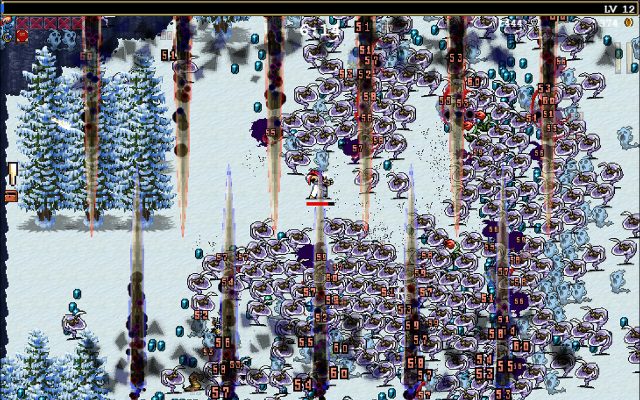
My least favorite new weapon was the Mirage Robe, which leaves potentially explosive ghost copies of your character behind regularly as you move. I found it exceptionally difficult to use this ability effectively, as these ghostly clones only affected a small portion of the encroaching enemy swarm near my previous position. I did enjoy the evolved form of the weapon, though, which lets any projectiles confuse enemies in a way that makes them wander in semi-random directions, opening up plenty of open space even in the most troublesome hordes.

